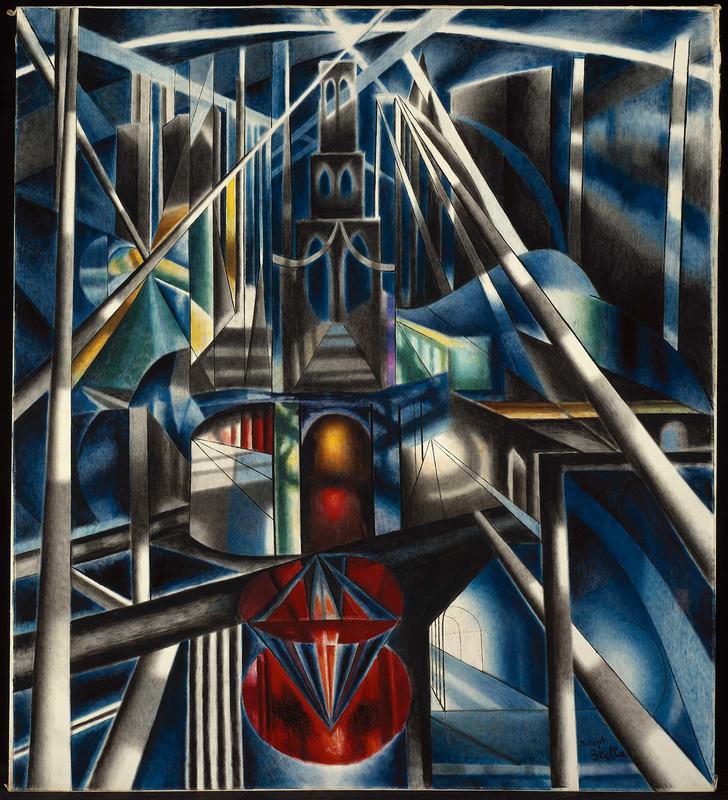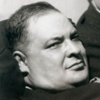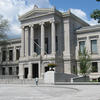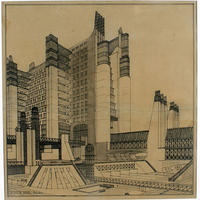More about Old Brooklyn Bridge

Contributor
Old Brooklyn Bridge, an example of Stella’s attraction to Cubism and Futurism with a dash of religious undertones, takes overachieving to another level.
Stella combined old and new including the stained-glass background of gothic churches in Europe with the new Brooklyn Bridge acting as a depiction of the industrial revolution in America. The bridge cables act as the soaring arches of Gothic architecture and offer a sense of movement in the composition blending Cubism and Futurism techniques he picked up during his travels to Paris and Italy. Our lonely boy’s Old Brooklyn Bridge represent the artist’s own spiritual passage to redemption in a ever-growing secular world combining religious themes into modern architecture and design.
He saw the Brooklyn Bridge as a type of shrine that helped curb his feelings of isolation and loneliness living in New York City. Stella was a bit of a floater--dabbling in a variety of isms throughout his career. He was well-traveled, visiting not only Europe often, but also North Africa and the Caribbean utilizing themes of nature and color in his paintings. Old Brooklyn Bridge is an example of Stella’s never-ending longing for home and feelings of displacement living in the U.S.A.
The Brooklyn Bridge offered much solace to Stella while living in New York City. That New York state of mind stuck with Stella throughout his career as he believed Brooklyn gifted him a sense of liberation. Stella first painted the Brooklyn Bridge in 1918 and continued to do so throughout his career. Paintings of the Brooklyn Bridge can be found at San Francisco Museum of Modern Art, The Whitney Museum of American Art] and this one, Old Brooklyn Bridge at the Museum of Fine Arts, Boston. Grab a lobster roll with a Sam Adams lager, and head over to view Stella’s tribute to the industrial revolution in America.
Sources
- "Old Brooklyn Bridge," Museum of Fine Arts, Boston, February 16, 2018, , accessed April 02, 2018, http://www.mfa.org/collections/object/old-brooklyn-bridge-34351.
- Joseph Stella Biography, Art, and Analysis of Works," The Art Story, , accessed April 02, 2018, http://www.theartstory.org/artist-stella-joseph.htm.
- United States of America, National Endowment for the Humanities, Picturing America, Picturing America, , accessed April 11, 2018, https://picturingamerica.neh.gov/downloads/pdfs/Resource_Guide_Chapters….
- "Joseph Stella Biography, Art, and Analysis of Works," The Art Story, , accessed May 11,, 2018, http://www.theartstory.org/artist-stella-joseph.htm.












